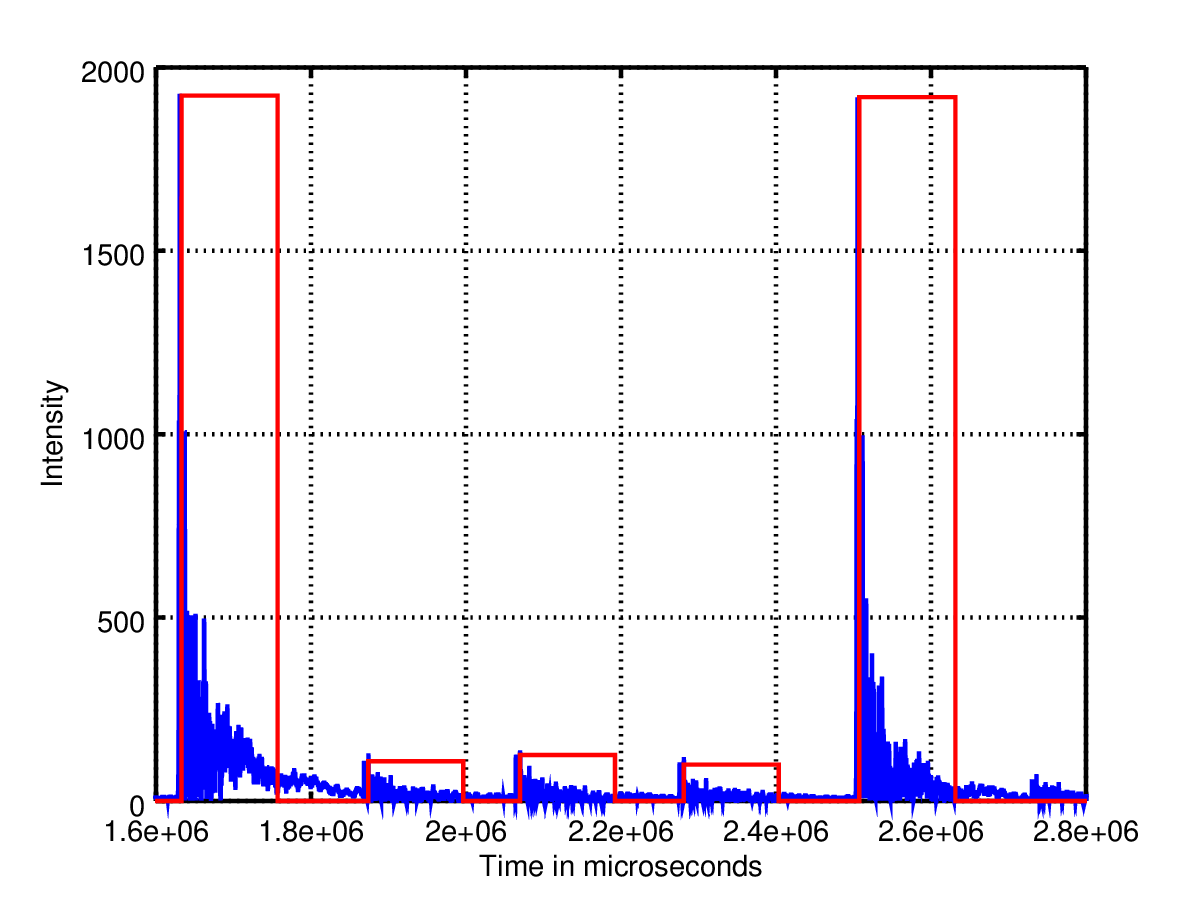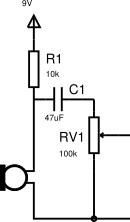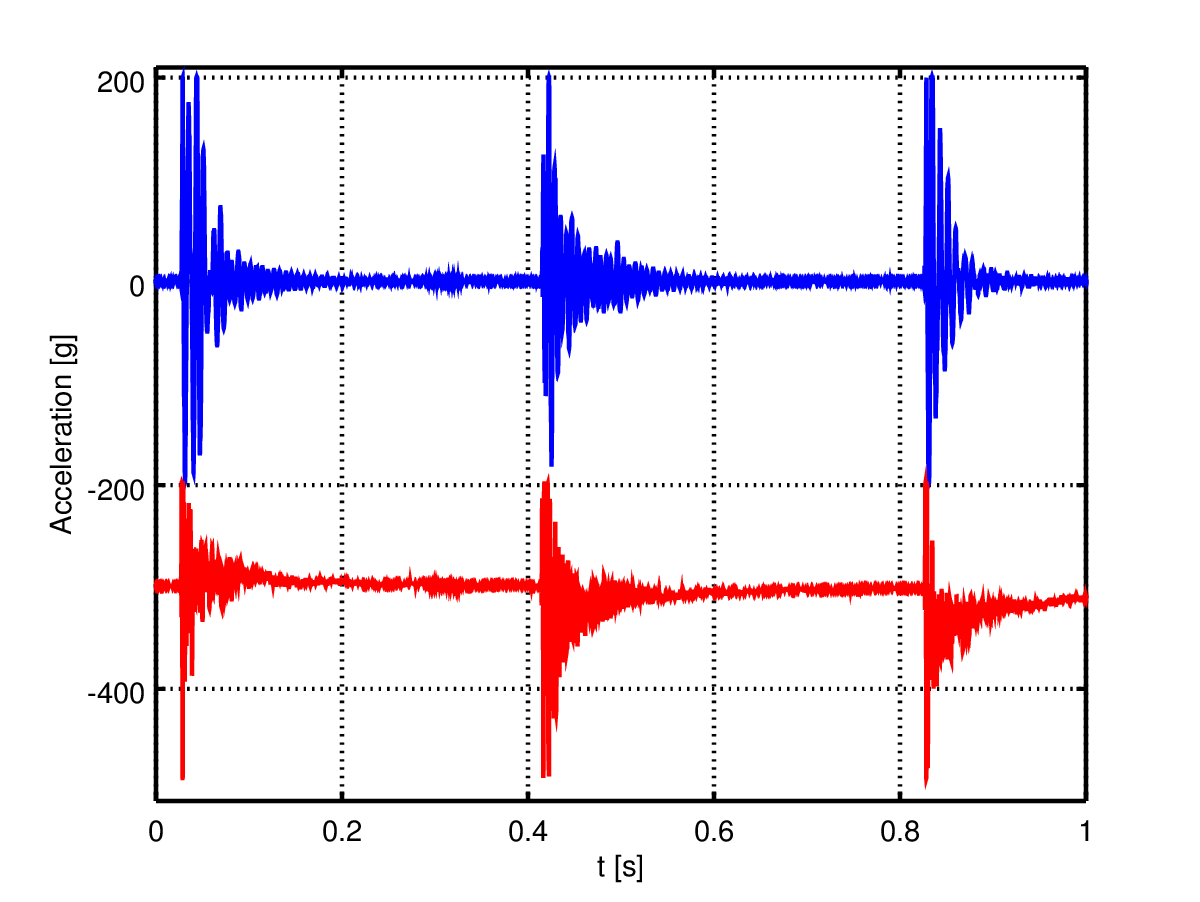Hi guys,
I just got the new sensors, which are actually just microphones. If you think about it, contact microphones behave almost exactly like accelerometers. For a standard electret microphone, sounds induce a vibration of a thin membrane. Using a resistor to polarize it, the microphone's output voltage is proportional to those sounds. However, a contact microphone converts vibrations into a voltage, that's almost the same as an accelerometer, so that's exactly the kind of device I needed for the drums.
The first test was actually quite good. I used a Raspberry Pi to get the output of a microphone taped to a drum, and ran it through the trigger module of the drum kit, here's the result:

In blue, you can see the raw signal from the output of the microphone, and in red how the trigger detects hits on the drum. By the way, I used a 9V power supply (see figure below) to record that, so in the future I'll have to use an op amp to amplify the output signal.

The next figure shows you the direct comparison between an accelerometer (blue), and a microphone (red).

As you can see, the signals are quite similar. However, the microphone's amplitude (normalized as an acceleration), is a bit lower than the accelerometer, and we can also see the capacitor's discharge, so it might be a good idea to replace that by a lower value in the future.
Anyway, this was just a test, and the future 'sensor' board will definitely have an op amp, and some proper filtering (high pass, to remove the DC component of the microphone, and low pass, to cleanup the signal).
Note that the microphones have been carefully chosen so that their spectral response is perfectly fine from ~0 to 1kHz, in order to replicate the response of the accelerometers.
Cheers.
 Jeremy
Jeremy
Discussions
Become a Hackaday.io Member
Create an account to leave a comment. Already have an account? Log In.